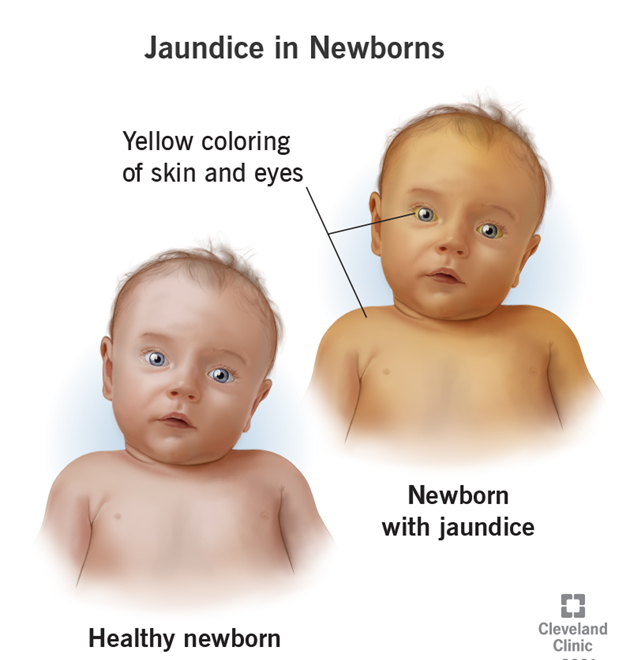A nurse is assessing a newborn who has developmental dysplasia of the hip (DDH). Which of the following findings should the nurse expect?
Inwardly turned foot on the affected side
Absent plantar reflexes
Lengthened thigh on the affected side
Asymmetric thigh folds
The Correct Answer is D
Choice A reason:
Inwardly turned foot on the affected side: An inwardly turned foot, also known as metatarsus adductus, is not typically associated with developmental dysplasia of the hip (DDH). This condition is more related to foot positioning and alignment rather than hip dysplasia.
Choice B reason:
Absent plantar reflexes: The plantar reflex, also known as the Babinski reflex, is usually present in newborns and indicates normal neurological function. An absent plantar reflex is not a common finding in DDH and would more likely suggest a neurological issue.
Choice C reason:
Lengthened thigh on the affected side: In DDH, the affected thigh is often shorter, not longer, due to the displacement of the femoral head from the acetabulum. This can lead to a noticeable difference in leg length.
Choice D reason:
Asymmetric thigh folds: Asymmetric thigh folds are a common sign of DDH. When the hip is dislocated or subluxated, it can cause uneven skin folds on the thighs and buttocks. This asymmetry is a key indicator that prompts further investigation, such as an ultrasound or X-ray.

Nursing Test Bank
Naxlex Comprehensive Predictor Exams
Related Questions
Correct Answer is A
Explanation
Choice A reason:
The indirect Coombs test is used to detect Rh-positive antibodies in the mother’s blood. This test is crucial for Rh-negative mothers who have given birth to Rh-positive infants. It helps determine if the mother has been sensitized to Rh-positive blood and has developed antibodies against it. If these antibodies are present, they can cross the placenta in future pregnancies and attack the red blood cells of an Rh-positive fetus, leading to hemolytic disease of the newborn.
Choice B reason:
The statement “It determines the presence of maternal antibodies in the newborn’s blood” is incorrect. The indirect Coombs test is performed on the mother’s blood, not the newborn’s. It screens for antibodies that could potentially harm the fetus in future pregnancies. The direct Coombs test, on the other hand, is used to detect antibodies that are already attached to the newborn’s red blood cells.
Choice C reason:
The statement “It detects Rh-negative antibodies in the newborn’s blood” is incorrect. The indirect Coombs test does not detect Rh-negative antibodies in the newborn’s blood. Instead, it identifies antibodies in the mother’s blood that could react against Rh-positive red blood cells. This test helps in assessing the risk of hemolytic disease in future pregnancies.
Choice D reason:
The statement “It determines if kernicterus will occur in the newborn” is incorrect. Kernicterus is a severe form of jaundice caused by high levels of bilirubin in the blood. While the Coombs test can help identify hemolytic disease, which can lead to jaundice, it does not directly determine the risk of kernicterus. The primary purpose of the indirect Coombs test is to detect antibodies that could cause hemolytic disease in future pregnancies.
Correct Answer is C
Explanation
Choice A Reason:
Encouraging the mother to supplement breast-feeding with formula is not the best intervention to prevent jaundice. Frequent breastfeeding helps to increase the infant’s fluid intake and promotes the excretion of bilirubin through stools. Supplementing with formula may interfere with the establishment of breastfeeding and is not necessary unless the infant is not feeding well.
Choice B Reason:
Keeping the infant NPO (nothing by mouth) until the second period of reactivity is not recommended. Early and frequent breastfeeding is crucial in preventing jaundice as it helps to establish milk supply and promotes the passage of meconium, which contains bilirubin.
Choice C Reason:
Encouraging the mother to breastfeed the infant every 2 to 3 hours is the best intervention to prevent jaundice. Frequent breastfeeding ensures that the infant receives adequate nutrition and hydration, which helps to lower bilirubin levels by promoting regular bowel movements.

Choice D Reason:
Placing the infant under phototherapy is a treatment for jaundice, not a preventive measure. Phototherapy is used when bilirubin levels are already elevated. The goal is to prevent jaundice from developing in the first place through frequent breastfeeding.
Whether you are a student looking to ace your exams or a practicing nurse seeking to enhance your expertise , our nursing education contents will empower you with the confidence and competence to make a difference in the lives of patients and become a respected leader in the healthcare field.
Visit Naxlex, invest in your future and unlock endless possibilities with our unparalleled nursing education contents today
Report Wrong Answer on the Current Question
Do you disagree with the answer? If yes, what is your expected answer? Explain.
Kindly be descriptive with the issue you are facing.
